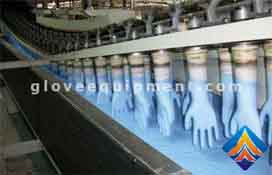What Is The Difference Between Nitrile, Latex, And Vinyl Gloves?
Disposable gloves are an essential ingredient in any medical environment. Not only do they protect healthcare providers and patients from exposure to potentially dangerous microbes, but they also help set health and care precedents across the industry. While this is not surprising, you may not realize that disposable gloves are not all the same.
Different material and design choices make some products more suitable for different medical environments. Also, if you order the wrong type of glove for your exercise, you may end up wasting resources and increasing the risk of punctures, tears, and tears.
Disposable gloves are usually made from one of three materials: nitrile, latex, or vinyl. In this article, we will explore what makes these gloves different from each other and provide guidance on the best environment for each type. Here are the differences between the three gloves, including latex gloves, vinyl gloves, and nitrile gloves.
Latex gloves
Latex has been the rock star of the medical disposable glove world for decades. As mentioned earlier, this is because Of Darwin Brown, an assistant physician who advised the protection of latex gloves from blood-borne pathogens such as HIV in the 1980s and 1990s. But as they became more common, the number of allergic reactions increased. This has led to increased demand for latex-free disposable glove alternatives such as nitrile and vinyl. For those who are not allergic, latex gloves are comfortable, relatively inexpensive, and highly sensitive to touch.
Disposable latex gloves are highly flexible, protective, and comfortable and are suitable for most medical environments – as long as latex allergies are not a problem.
Vinyl gloves
Vinyl gloves are made from petroleum-based film PVC. The main advantage of vinyl disposable gloves is that they are cheap to make. Having said that, they are not as durable as latex and nitrile, and they provide limited protection against chemical or biomedical exposure. When vinyl gloves are stretched or bent, the molecules separate and the integrity of the protective barrier is compromised. Vinyl gloves have also raised concerns about their impact on the environment, as has international health and safety.
Because of their low cost and low protection levels, vinyl gloves are commonly used in non-hazardous and low-infection environments.

Nitrile gloves
Nitrile gloves gained prominence in the 1990s as a major latex alternative. Although they are not as elastic or flexible as latex gloves, the durability and chemical resistance of disposable nitrile gloves are significantly improved. Therefore, these gloves are ideal for anyone who has to deal with potentially dangerous and corrosive chemicals. They are also well suited to most medical Settings, are highly resistant to puncture, and eliminate the risk of latex allergy.
Understanding these key differences will help you make the right decision when choosing new inspection gloves for your organization’s unique medical environment.
We are disposable gloves production lines manufacturer. If you are interested in our products, please feel free to contact us.


